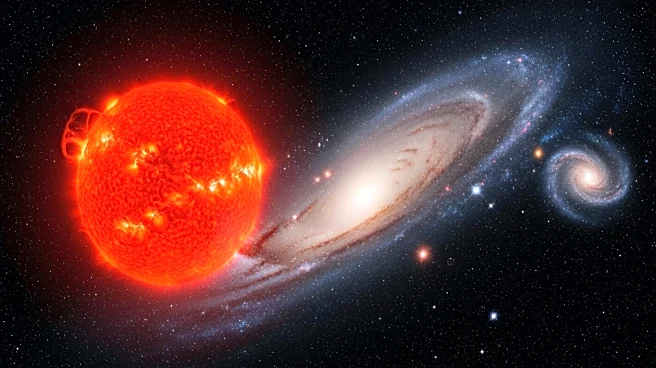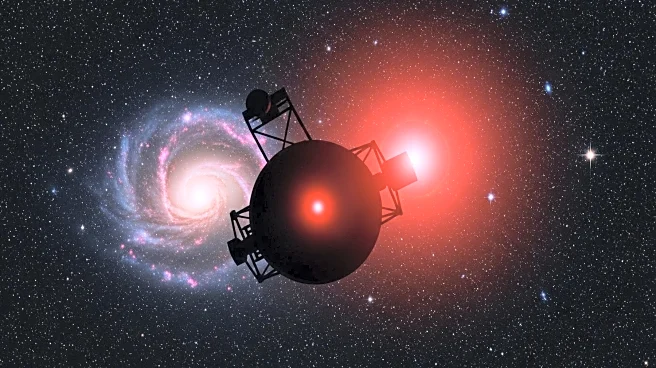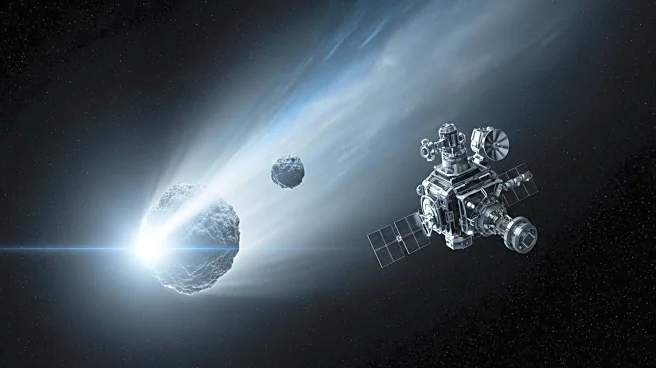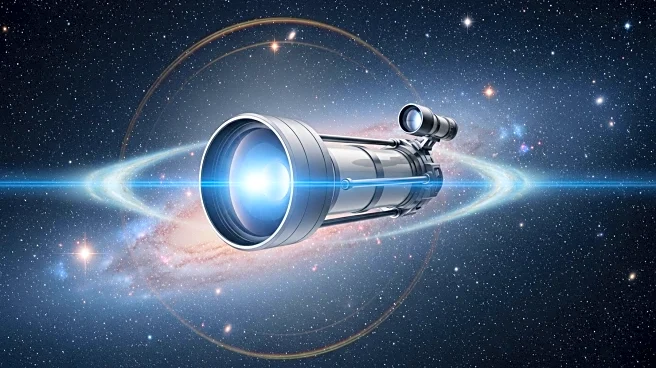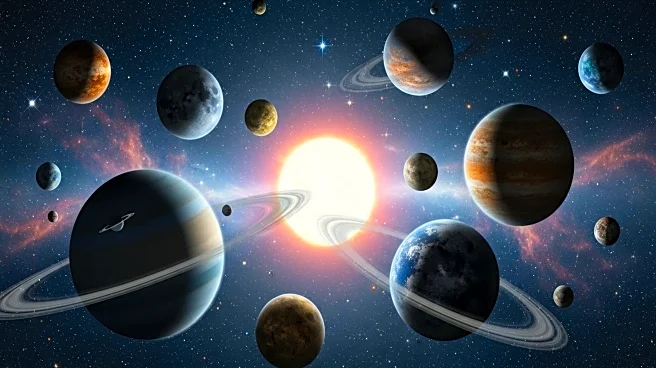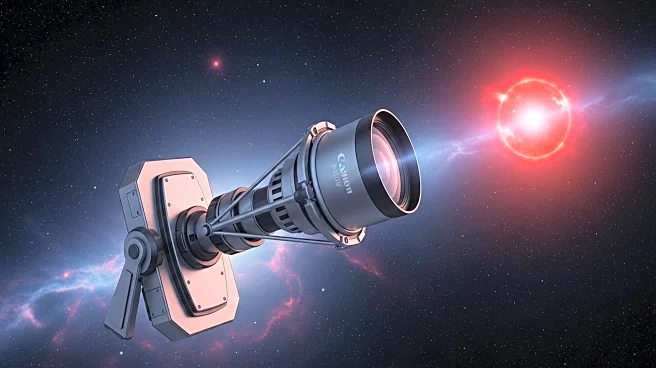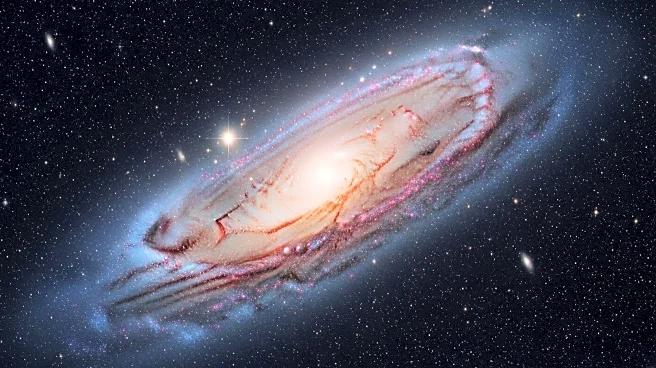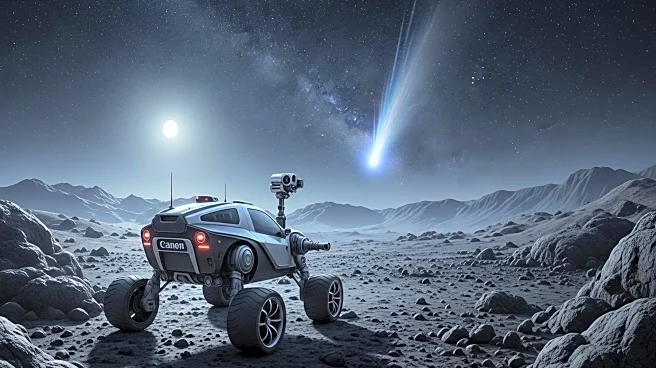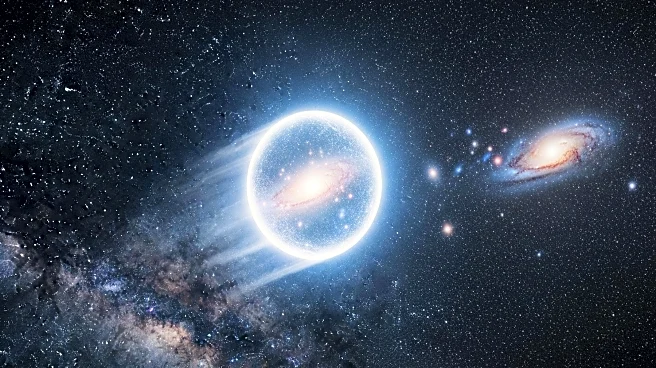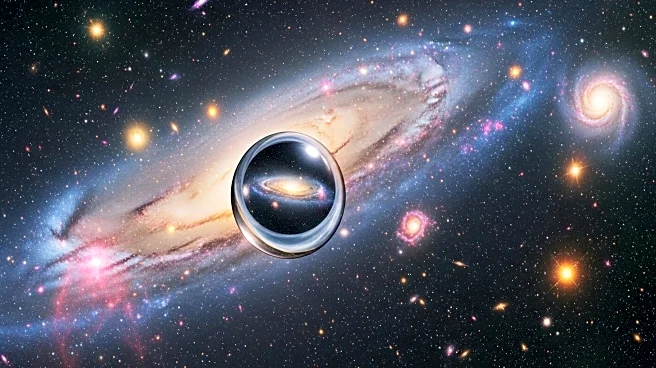What's Happening?
The James Webb Space Telescope has achieved a significant milestone by identifying the original star responsible for a supernova explosion, marking the first time such a discovery has been made. The supernova, named SN 2025pht, originated from a red supergiant star located approximately 40 million light-years away in the galaxy NGC 1637. This accomplishment was made possible by Webb's advanced infrared capabilities, which allowed astronomers to see through the thick dust surrounding the star, revealing its true brightness. The discovery provides a rare before-and-after look at a dying star, offering valuable data on the characteristics and environment of red supergiants prior to their explosive demise.
Why It's Important?
This discovery is crucial for astronomers as it addresses a long-standing mystery regarding the visibility of massive red supergiants. Despite the expectation that many such stars should explode, few have been observed doing so. The findings suggest that these stars may have been hidden behind heavy dust clouds, which previous telescopes could not penetrate. The ability of the James Webb Space Telescope to see through these dust clouds opens new avenues for understanding the life cycles of massive stars and the conditions leading to supernova explosions. This could significantly enhance the study of stellar evolution and the chemical processes occurring in dying stars.
What's Next?
Astronomers plan to use the James Webb Space Telescope to study more dusty environments around dying stars, potentially uncovering further insights into the life cycles of red supergiants. Future telescopes, such as NASA's upcoming Nancy Grace Roman Space Telescope, will complement Webb's observations by monitoring these stars and possibly capturing them in their final stages. This ongoing research promises to expand our knowledge of massive stars and supernova progenitors, with the potential to exceed the findings of the past three decades.
Beyond the Headlines
The discovery also highlights the unexpected chemical composition of the dust surrounding the progenitor star, which was primarily graphite rather than the oxygen-rich minerals typically found around red supergiants. This suggests that some red supergiants may undergo significant changes late in their life, altering their chemical makeup. Understanding these processes could provide deeper insights into the complex interactions and transformations occurring in the final stages of stellar evolution.

